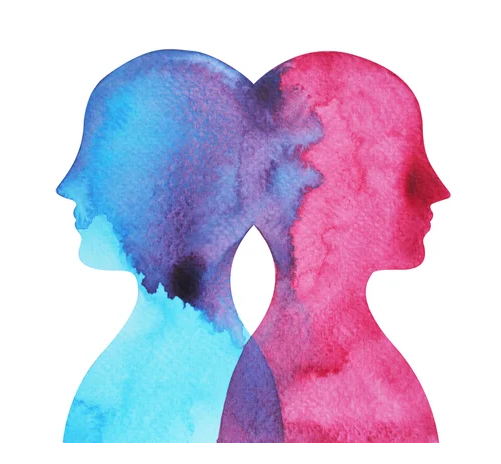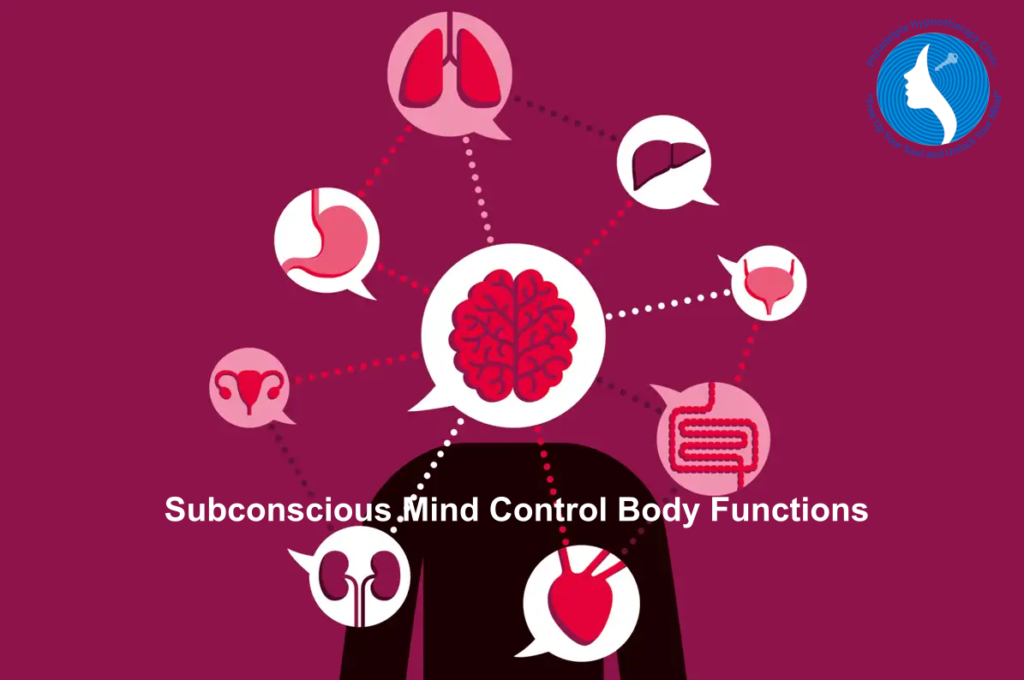Conscious.
Conscious is everything that you are experiencing. Conscious is the song that keeps playing in your head, the sweetness of chocolate mousse, the agonizing pain of a toothache, the passionate love you have for your child, and the painful realization that these emotions eventually pass.
From the earliest ages of antiquity till the present, the origin and nature of these experiences, also referred to as qualia have remained a mystery. Many contemporary analytic philosophers of mind, probably most notably Daniel Dennett of Tufts University, claim that consciousness is an illusion because they find it to be such an awful affront to what they feel should be a meaningless cosmos of matter and the void. In other words, they either contest the reality of qualia or contend that science will never be able to study them in any real way.

This essay would be quite brief if that claim were accurate. I would only need to explain why you, I, and most people are so sure that we even have feelings. However, if I have a tooth abscess, a clever argument to convince me that my suffering is unreal will not even slightly diminish its agony. I won’t continue since I have little sympathy for this desperate attempt to solve the mind-body issue.
Most academics take consciousness for granted and work to understand how it relates to the scientifically defined external world. “Francis Crick and I,” continues Daniel Dennett, “decided more than 25 years ago to abandon the philosophical debates surrounding consciousness (which have occupied thinkers since at least the time of Aristotle) and instead look for its physical manifestations.” What is it that causes a highly excited brain cell to become conscious? We aim to come a step closer to fixing the underlying issue once we can comprehend that.
Subconscious.
In Sigmund Freud’s psychoanalytic theory of personality, the subconscious mind is referred to as a repository of sensations, thoughts, urges, and memories that are not a conscious part of the conscious mind.
This viewpoint views most of the subconscious’s contents—such as pain, anxiety, or conflict—as inappropriate or unpleasant. Even if people are ignorant of these underlying influences, Freud thought that the subconscious nonetheless affects behavior.

It can be useful to think of the mind as an iceberg while trying to understand the subconscious mind. The conscious and subconscious are each represented by something above and below the water, respectively.
Think about how an iceberg might appear if you could see it from all sides. The iceberg is actually just partially visible above the water. The massive volume of ice that makes up most of the iceberg is submerged deep beneath the ocean’s surface and is, therefore, invisible from the surface.
Our conscious awareness’s objects are mere “the tip of the iceberg.” Subsurface information contains the remaining knowledge that is not conscious. Even though this knowledge might not be conscious, it nevertheless impacts how people act now.
Subconscious events include things like repressed emotions, automatic reflexes, complexes, and hidden phobias. A divine’s role in directing a motive or action has historically been linked to feelings, ideas, and reactions that are not conscious to a human.
The Freudian Slip is the most prevalent example of subconscious activity. A common occurrence is when someone uses the incorrect term or makes a memory or verbal error, such as calling their spouse by their ex-name. spouse’s
These errors are frequently interpreted by listeners as the speaker’s covert emotions. Freud thought they revealed more than what they appeared to while being perceived as unintentional. The lapses, it is said, reveal a person’s deeper, more genuine, and hidden thoughts and sentiments.
Studies have been done to determine whether there is a connection between these linguistic and memory errors and the subconscious. A person is believed to be more likely to make verbal mistakes if they have more suppressed thoughts and sentiments.
Internalized racism is another illustration, albeit one that is more complicated than a Freudian slip. Even if we are actively opposed to racist ideologies, psychologists and mental health practitioners feel that everyone is likely to have some degree of internalized racism.
犀利士
s, serif; font-size: 16pt;”>Although it is disturbing to consider, we may be able to challenge racist programming by comprehending and studying our cultural origins and upbringing. Analysis of conditioning is crucial to understanding the origins of our subconscious habits.
Subconscious events include things like repressed emotions, automatic reflexes, complexes, and hidden phobias. A divine’s role in directing a motive or action has historically been linked to feelings, ideas, and reactions that are not conscious to a human.
The Freudian Slip is the most prevalent example of subconscious activity. A common occurrence is when someone uses the incorrect term or makes a memory or verbal error, such as calling their spouse by their ex-name. spouse’s
These errors are frequently interpreted by listeners as the speaker’s covert emotions. Freud thought they revealed more than what they appeared to while being perceived as unintentional. The lapses, it is said, reveal a person’s deeper, more genuine, and hidden thoughts and sentiments.
Studies have been done to determine whether there is a connection between these linguistic and memory errors and the subconscious. A person is believed to be more likely to make verbal mistakes if they have more suppressed thoughts and sentiments.
Internalized racism is another illustration, albeit one that is more complicated than a Freudian slip. Even if we are actively opposed to racist ideologies, psychologists and mental health practitioners feel that everyone is likely to have some degree of internalized racism.
Although it is disturbing to consider, we may be able to challenge racist programming by comprehending and studying our cultural origins and upbringing. Analysis of conditioning is crucial to understanding the origins of our subconscious habits.
Conscious vs. Subconscious
Conscious vs. Subconscious is the subject of this post. You’re of oneself, and the environment is what consciousness means. This awareness is personal to you and subjective.
A new theory of consciousness has been established by a researcher at Boston University’s Chobanian & Avedisian School of Medicine, describing why it evolved, what it is useful for, which disorders influence it, and why it is so difficult to diet and resist other cravings.
According to the corresponding author Andrew Budson, MD, professor of neurology, “in a nutshell, our theory is that consciousness emerged as a memory system that is employed by our subconscious brain to enable us flexibly and imaginatively foresee the future and plan accordingly.”
The idea that humans don’t directly experience the world, make judgments, or take acts is what makes this theory utterly novel. Instead, we perform all of these actions subconsciously until becoming cognizant of them around a half-second later.

In order to explain a number of phenomena that could not be readily explained by earlier theories of consciousness, Budson explained that he and his co-authors, psychologist Elizabeth Kensinger, PhD, from Boston College, and philosopher Kenneth Richman, PhD, at the Massachusetts College of Pharmacy and Health Sciences, developed this theory.
We were aware that conscious processes were simply too slow to actively participate in activities like music, sports, and other ones that call for quick reactions. Budson, who is also Chief of Cognitive & Behavioral Neurology, Associate Chief of Staff for Education, and Director of the Center for Translational Cognitive Neuroscience at the Veterans Affairs (VA) Boston Healthcare System, stated that if consciousness is not involved in such processes, then a better explanation of what consciousness does was required.
This idea, according to the researchers, is crucial because it clarifies how all of our choices and actions—which we mistakenly believe were made consciously—are actually made subconsciously.
Therefore, because our conscious mind is not in charge of our actions, we can tell ourselves that we are just going to have one spoonful of ice cream, and then, the next thing we know, the container is empty.
Even our thoughts generally escape our conscious awareness. We may struggle to stop a constant stream of thoughts as we try to go to sleep, and this lack of control also contributes to the difficulties of practicing mindfulness, says Budson.
According to Budson and his coauthors, various neurologic, psychiatric, and developmental conditions, such as Alzheimer’s disease and other dementias, delirium, migraines, schizophrenia, dissociative identity disorder, some forms of autism, and more, qualify as diseases of consciousness.
The authors’ research concludes with a road map for how therapists, teachers, and individuals might use clinical and educational approaches that can effectively mold both the conscious mind and the subconscious brain to change behavior and learn information.
With more research, this approach may help patients reduce problem behaviors like overeating, shed light on how the brain’s structural components aid memory, and even shed light on philosophical questions about free will and moral responsibility.
Conscious as a Memory System
Our argument is that there is a disconnect between the reasons awareness evolved and the new roles it has taken on due to further evolution. Think about episodic memory. It seems like a poor system—prone to forgetfulness and misleading memories—if episodic memory evolved exclusively to accurately record previous events.
However, if we accept the theory that episodic memory emerged as a flexible and inventive way for humans to mix and reorganize memories of the past to plan for the future, then it is a very good system.
We contend that consciousness was initially a component of the episodic memory system, which was most likely required to carry out that flexible information recombining.
We further assert that consciousness was then co-opted to create other cognitive processes like language, abstract thought, and problem-solving that are not specifically related to memory.
We suggest that this theory can account for several facts, including the sluggish speed and the order of consciousness that occurs after the occurrence, which cannot be adequately explained by other theories.
We think that our hypothesis could have significant effects on how we comprehend deliberate behavior and awareness in general.
Furthermore, we argue that since sensory, working, and semantic memory are all related to episodic memory, and collectively they produce the phenomenon of awareness, they should all be regarded as the conscious memory system.
Finally, we propose that every cortical region contributes to the conscious memory system and that the cerebral cortex is the region of the brain that enables consciousness.
The effect of your subconscious on your emotional state.
Subconscious feelings, beliefs, and thoughts may result in a variety of issues, such as:
- Anger
- Bias
- Obsessive actions
- challenging social interactions
- Distress
- relationship difficulties
According to Sigmund Freud, many thoughts, feelings, and emotions are suppressed or kept from our conscious consciousness because they are just too dangerous. According to Freud, these secret desires and wishes can occasionally surface through dreams and verbal slip-ups (aka “Freudian slips”).
Freud also held that the subconscious mind held all of our primal instincts and drives. The subconscious contains, for instance, the instincts for life and death. The instincts that are related to survival are the life instincts, also referred to as the sexual instincts. Death instincts include things like aggressive, traumatic, and dangerous thoughts.
These urges are suppressed because our conscious minds consider them undesirable or unreasonable. Freud advocated using various defense mechanisms to block these drives from being conscious or keeping them hidden from consciousness.
The journal of Cognitive and Behavioral Neurology has these data available online.
EAK and AEB received funding for this work from NSF grant BCS-1823795 and NIH project P30-AG072978, respectively.
Hypnosis is a purely natural state that allows direct access to the subconscious mind, where our learned behavior pattern-making systems reside.
With hypnosis, we can bypass what would require a prolonged or circuitous re-learning program in our fully conscious state.
There is no physical intrusion, it is simply a self-contrived change of mental awareness. Thus, hypnosis is an artificially enhanced state of suggestibility resembling sleep. Nevertheless, it is not sleep.
The Power of the Subconscious Mind
While there is no clear definition of “consciousness,” one suggestion is that a person’s normal state of consciousness is the one in which he or she spends a major part of his waking hours. An altered state of consciousness is one in which the individual clearly feels a qualitative shift in her/his pattern of mental functioning.
The hypnosis state is identical to the state of full consciousness with three major exceptions:
- Concentration will be focused completely (without the normal distractions of reasoning, waking conscious mode).
- Every muscle will be relaxed.
- There is an increase in the acuity of the senses – hearing, touch, and smell.
As hypnosis is a purely natural state, a sudden withdrawal of the hypnotist will not abandon the subject to an unending trance. Rather, the attentive subject will either be so surprised by the disappearance of the hypnotist as to be tempted to open their eyes and convert to normal consciousness or, conversely, allow themselves to enjoy a restful sleep from which they will naturally awaken.
Importantly, the client has control, and the hypnotist cannot think or perform anything against the subject’s will.
How hypnosis synchronizes the conscious and subconscious mind.
Most human problems are “unconscious,” and even if we want to, it is, unfortunately, difficult to manage unconscious behavior with just conscious effort.
The functioning of the conscious and subconscious (subconscious) minds are totally distinct from one another. The unconscious/subconscious mind is filled with wanted and unwanted programs from early infancy till the present that play over and over again automatically, while the conscious mind is the more logical portion and the source of our wishes, ambitions, and aspirations. The subconscious mind is a representation of the programming that has been formed as a result of our life experiences since we were young children, what we have learned, as well as other people’s experiences and input from sources including family, teachers, friends, and the media. When habits take hold, it’s easy to think that we are constrained and helpless victims of unchangeable circumstances.
So having a more coherent relationship between the conscious and subconscious minds is the answer. Direct communication with the subconscious mind when under hypnosis, with the client’s consent, is how unique techniques are used. It is a very effective instrument for generating constructive adjustments in negative subconscious habits and beliefs that will satisfy wants and wishes and, as a result, be accepted by the conscious mind, with the old methods of acting no longer being applicable.
Try hypnosis if you’ve had enough of worry, pessimism, and persistent worries about the past interfering with your life and keeping you from going forward. You just have your worries to lose and have everything to gain.
Hypnosis and NLP by Victor Tsan, MD
Victor Tsan, MD, is Philadelphia’s leading hypnotherapist. His hypnotherapy methods have helped thousands of Philadelphia people overcome fears, alleviate anxiety and depression, fight insomnia, lose weight, stop smoking, stop drinking, and accomplish other healthy goals over the past 25+ years!
A range of hypnotherapy and hypnosis programs are provided by Dr. Victor Tsan to enhance the quality of life of his patients through specially created regimens based on their objectives. Dr. Tsan and his staff have assisted tens of thousands of patients in achieving success with weight loss, smoking cessation, stress relief, business coaching, sports encouragement, and other programs!
Dr. Tsan wants to positively impact as many people’s lives as he can. Dr. Tsan creates programs to assist each person in discovering fun and fulfillment in life through positive thinking through education, study, and experience. Dr. Tsan assists individuals in achieving their own best by integrating meditation, healthy eating, exercise, affirmations, and hypnosis.
We believe that anyone can achieve their goals by thinking positively. Learn how to put your dreams into action. You can have us show you the way there!
For an appointment, contact our clinic at (267) 403-3085 or book it online using our secure application.
